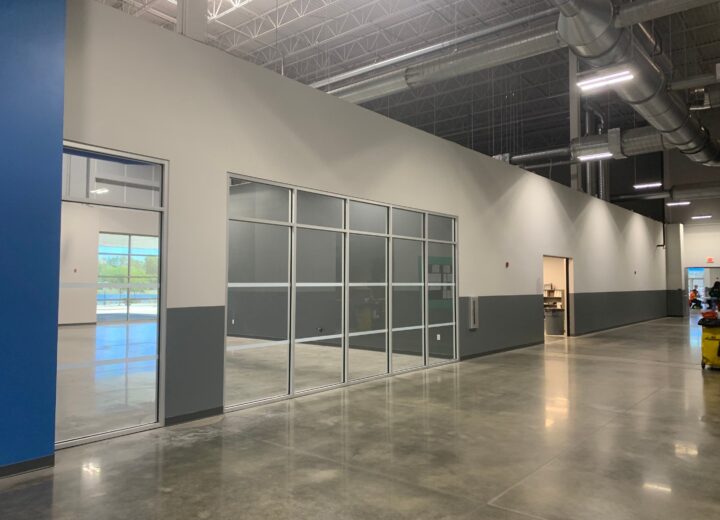 Whether you own or help to maintain a commercial facility, you know that certain safety measures are required for the good of your workers and clients. The strict rules and guidelines created by OSHA can help prevent accidents and losses.Safety striping on floors is NOT required by OSHA guidelines. OSHA does highlight that safety striping can help to make a facility easier to navigate, safer during emergencies, and more organized in terms of hazardous aisles. It is a relatively small change you can make to your facility’s flooring that can make a huge difference.
Whether you own or help to maintain a commercial facility, you know that certain safety measures are required for the good of your workers and clients. The strict rules and guidelines created by OSHA can help prevent accidents and losses.Safety striping on floors is NOT required by OSHA guidelines. OSHA does highlight that safety striping can help to make a facility easier to navigate, safer during emergencies, and more organized in terms of hazardous aisles. It is a relatively small change you can make to your facility’s flooring that can make a huge difference.
Even though OSHA does not require permanent aisles or electrical areas to be marked, you may still decide to invest in these measures.
Why to Use Safety Striping
You might be thinking that your facility is already following OSHA’s rules and guidelines for safety, and that you have already marked any required areas, so why spend the extra money to add safety striping?
This is an excellent question to ask. All businesses must take cost into account when deciding on the specifics of any project.
Practical Uses of Safety Striping
There are many areas that could benefit from safety striping. These include (but are not limited to):
- Aisle Designations
- Areas for Inspection, Processing, and Loading
- Employee Only Access Areas
- Equipment Only Areas or Lanes
- Exit Guides
- Hazardous Areas
- Product Placement locations
- Safe Walking Areas
- Traffic Routes/Flows
As you can see, there are many places within a facility that you can use safety striping on.
Professional painters know that the amount of floor striping needed is directly proportional to not only your facility, but to the activity within the building. If you have too many safety strips within a small space, it can defeat the purpose of their use.
OSHA Designated Colors
If you are in charge of your facility’s safety, then you probably already know that the Occupational Safety and Health Administration (OSHA) has designated colors that must be used within certain areas. If you are unfamiliar with the designated coding system, the colors are as follows:
- Green – Safety equipment
- Orange – Product Inspection
- Red or Bright Orange – Biohazards
- Red – Danger
- Red and White – To be kept clear or open
- White – Common purpose
- Yellow – Caution
- Yellow/Black – Hazardous
There are also other features that can be added to a facility’s floors that can send clear, easy to understand messages. These include arrows, foot prints, and classic signs (such as ‘stop‘, ‘warning‘, or ‘exit‘).
Though OSHA does not require safety striping on all floors, there are other surfaces that do require strict attention to detail. Piping is required to be color-coded. For convenience, consider having these areas taken care of at the same time that you have your safety striping applied.
Once you have applied your safety striping, you will need to make sure that it is maintained. Adding your safety striping to your facility’s maintenance checklist is the easiest way to catch any fading, peeling, chipping, etc.
If you need to add or replace safety striping to your facility, it is best to look to the professionals to handle the job. They will understand the different rules and regulations, from OSHA’s strict guidelines, to your local government’s requirements as well.
Professional painting contractors will be able to help you understand the total cost of a job, and will also be able to work around your schedule, which is extremely important!
Safety striping is one of those things that you can do to provide a safer environment for your employees at relatively low cost and little hassle.






